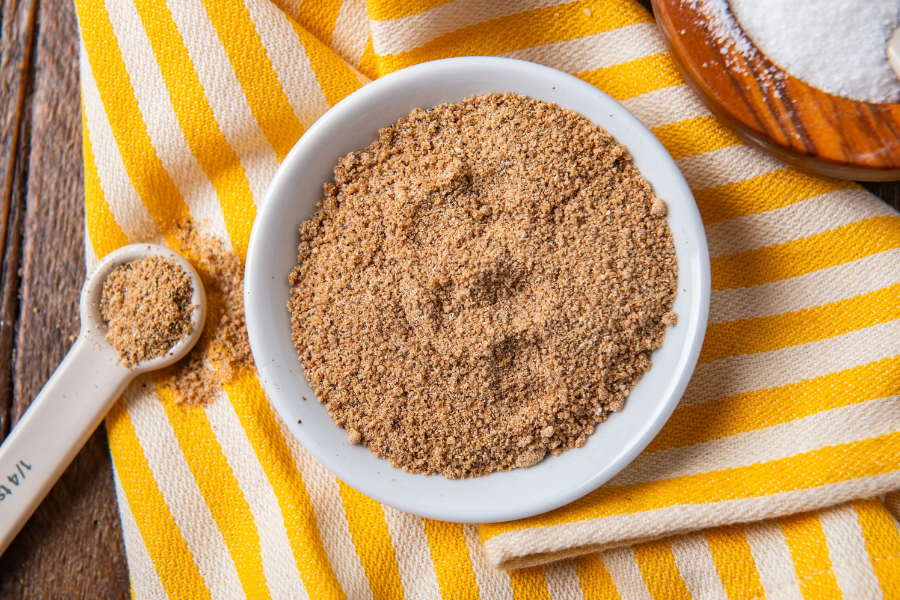With a long history of culinary and medical use, honey is a tried-and-true natural sweetener. But what happens when you take this golden liquid and transform it into a dry, shelf-stable form? Enter honey powder — a versatile ingredient that’s gaining popularity in both kitchens and wellness spaces.
Whether you’re a home cook, a food manufacturer, or a health-conscious consumer, this guide will break down everything you need to know about honey powder — from its creation to its everyday uses.
What Is Honey Powder?
Honey powder is essentially dehydrated honey, typically spray-dried or freeze-dried and mixed with a stabilizing agent like maltodextrin. The result is a fine, golden-colored powder that retains the flavor and sweetness of natural honey but with improved shelf life and convenience.
Key Features:
- Appearance: Light golden or pale beige powder
- Flavor: Sweet, floral, similar to liquid honey
- Texture: Fine and dry
- Shelf Life: 1 to 2 years when stored properly
How Is Honey Powder Made?
The process of making honey powder involves removing the moisture content from liquid honey, usually through spray drying. This technique involves:
- Mixing honey with a carrier (typically maltodextrin or gum arabic)
- Atomizing the mixture into a hot chamber
- Quickly drying the droplets to produce a fine powder
- Collecting and packaging the final product in a moisture-proof environment
The resulting powder is easier to store, transport, and use in recipes that require dry ingredients.
Nutritional Benefits of Honey Powder
While some nutrients may be slightly reduced during the dehydration process, honey powder retains many of the benefits of raw honey.
Key Nutritional Highlights:
- Natural sweetener: Low glycemic index compared to refined sugar
- Antioxidants: Contains trace amounts of polyphenols
- Minerals: May contain small amounts of calcium, iron, and potassium
- Caloric content: Slightly less than granulated sugar (around 30 calories per tablespoon)
Note: Honey powder is free from artificial sweeteners and preservatives when made naturally.
Benefits of Using Honey Powder
1. Extended Shelf Life
Honey powder does not ferment or crystallize like liquid honey and can last up to two years when stored in a cool, dry place.
2. Convenient to Use
It blends easily with dry mixes, making it perfect for baking, dry rubs, seasoning blends, and drink mixes.
3. Easy to Measure
You don’t have to deal with sticky spoons or messy spills. About one tablespoon of liquid honey is equivalent to one tablespoon of honey powder.
4. Travel- and Storage-Friendly
Great for camping, emergency food kits, or situations where refrigeration is not an option.
5. Less Moisture
Ideal for recipes where you need sweetness without extra liquid (e.g., dry spice blends or powdered drinks).
Common Uses of Honey Powder
Honey powder can be used in a variety of culinary and wellness applications:
Baking
- Substitute for sugar or liquid honey in cookies, cakes, muffins, or granola
- Adds a subtle sweetness without affecting the moisture ratio
Beverages
- Sweetens teas, coffee, smoothies, and protein shakes
- Easily dissolves in hot liquids
Dry Rubs and Seasonings
- Great for BBQ rubs, chicken wings, or roasted nuts
- Adds sweetness and enhances browning
Cosmetics
- Used in DIY face masks, scrubs, and soaps
- A naturally occurring humectant that hydrates the skin
Health Remedies
- Can be added to herbal teas or throat lozenges for sore throat relief
- Safe for people avoiding sticky syrups
How to Substitute Honey Powder for Liquid Honey
Use the following general conversion:
- One tablespoon of liquid honey is equal to one tablespoon of honey powder.
- Add a bit of extra liquid (like milk or water) to your recipe if needed
Example for Baking:
If a recipe calls for ½ cup of honey:
- Use ½ cup of honey powder
- Add 2–3 tablespoons of extra liquid to balance the moisture
Potential Drawbacks
While honey powder is incredibly versatile, there are a few things to keep in mind:
- Additives: Some commercial honey powders contain artificial sweeteners or carriers like corn syrup solids. Always read the label.
- Less Aroma: The aroma and full-bodied taste of raw honey may be slightly muted in powdered form.
- Not Vegan-Friendly: Just like liquid honey, it is not considered vegan.
Storage Tips
To keep your honey powder fresh and clump-free:
- Store in an airtight container
- Keep in a cool, dry place
- Avoid humidity — moisture will cause clumping or spoilage
Where to Buy Honey Powder
Honey powder is available at:
- Health food stores
- Bulk food suppliers
- Online marketplaces like Amazon or specialty spice retailers
Look for organic, additive-free options if purity is a priority.
Conclusion
A flexible and shelf-stable substitute for liquid honey, honey powder is ideal for baking, cooking, cosmetics, and other applications. It offers the same natural sweetness and nutritional benefits without the mess or short shelf life. Whether you’re creating dry spice blends, baking healthier treats, or exploring natural skincare, honey powder is a game-changer in powdered form.
Frequently Asked Questions (FAQs)
1. Is honey powder the same as powdered sugar?
No. Honey powder is made from dehydrated honey and contains natural sugars. Powdered sugar is refined cane sugar ground into a fine consistency.
2. Is honey powder healthier than sugar?
Honey powder has a lower glycemic index and retains some of honey’s antioxidant properties, making it a slightly healthier choice than refined sugar.
3. Is it possible to substitute honey powder for honey in all recipes?
In most cases, yes. Just be sure to adjust the liquid content if the recipe depends on the moisture from liquid honey.
4. Does honey powder expire?
Honey powder typically has a shelf life of 1–2 years if stored in a cool, dry, and airtight container.
5. Is honey powder vegan?
No. Like liquid honey, honey powder is derived from bees and is not considered vegan.
Dive deeper into the latest beauty and lifestyle trends at GlamourCrunch.com.

